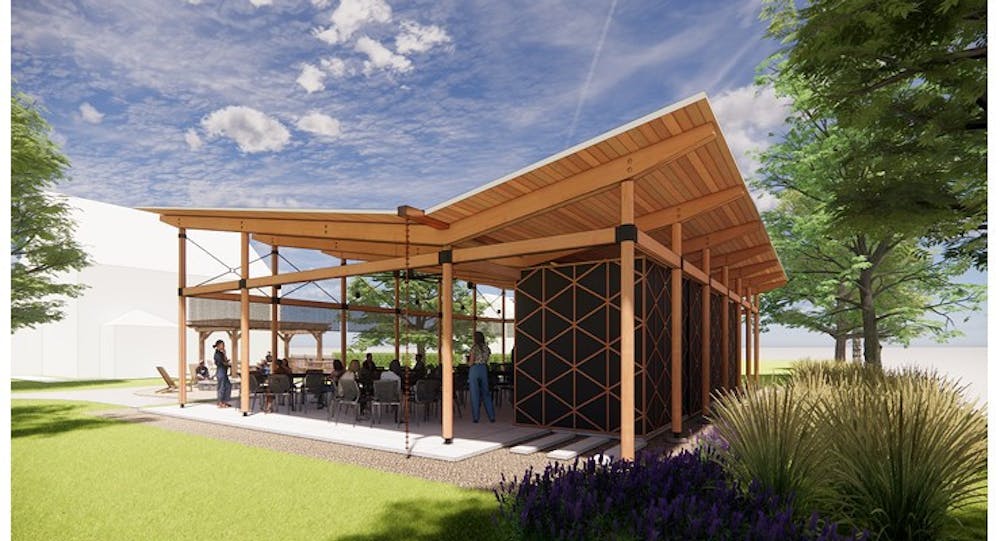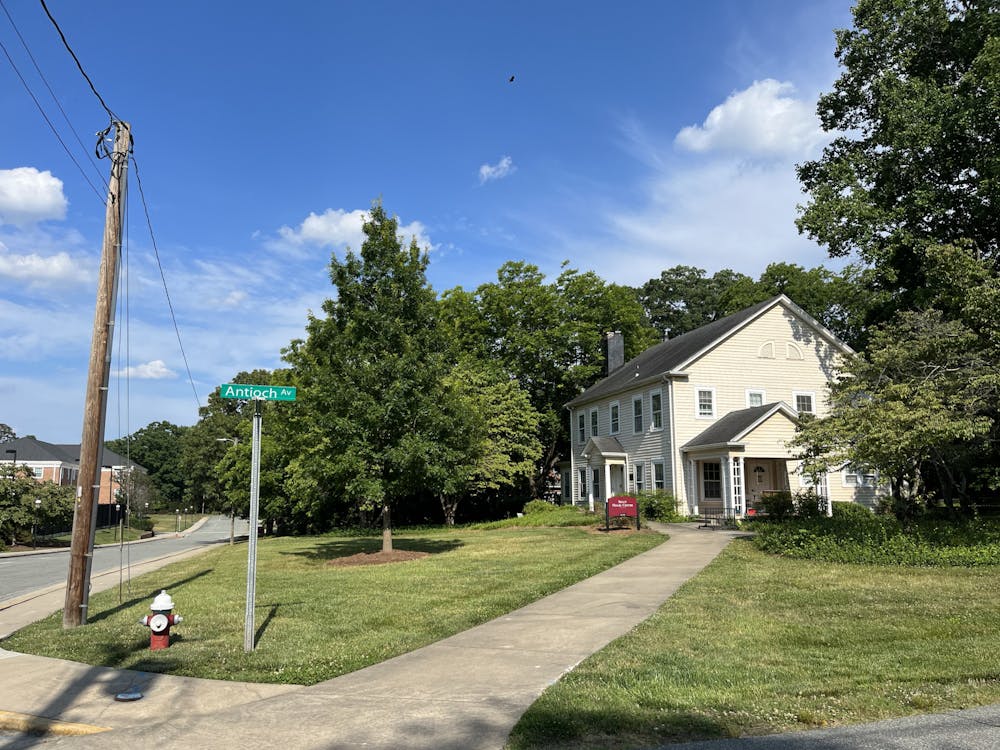The Elon Town Council considered a petition by Elon University to add a pavilion to the intersection of North Antioch Avenue and East College Avenue, behind the Sklut Hillel House during the June 13 meeting.
The council also held a public hearing for a conditional district rezoning request for developers to create a new subdivision and approved the 2024 fiscal year budget. The council also made three public proclamations — recognizing the month of June as pride month, June 19 as Juneteenth and July as park and recreation month for the town.
The pavilion will have a 1,766 square-foot open structure with a storage shed in the back. According to Lori Oakley, town planning director, the space will be used for student gatherings. Tim Dengler, assistant director of planning, design and construction management at the university, said Hillel raised the funds to provide this space.

The pavilion will be located in the the back of Hillel’s property with a 15-foot buffer. On the other side of Hillel’s property is a single family home owned by Jean Lowe, who expressed her concerns for the pavilion being near the edge of Hillel’s property.
“Of course I’m not for this,” Lowe said during the meeting. “My objection is that it looks like it's going to be more in my backyard in there. And yes, I object to that.”
The council will vote on the pavilion at the next meeting on June 26 and Mayor Emily Sharpe urged Lowe to speak with both the town staff and the university before the next meeting to reach an agreement before voting on the development.
“Putting myself in Ms. Lowes’ shoes, I wouldn’t want that in my backyard,” Sharpe said. “I think it’s an awesome facility, I think it would be excellent for the students and be excellent on university property, but this is an instance where there's going to be essentially an event center in her backyard.”
At the meeting, close to 30 residents were in attendance and over 10 people spoke during the public hearing for the conditional district rezoning. The council reviewed a residential project request, Parc East, containing 44 single-family homes and 85 townhomes in Parc East
The area is at the northeast intersection of University Drive and Shallowford Church Road and is currently zoned as neighborhood residential, village center and suburban residential. Both neighborhood residential zoning and suburban residential zoning contain mainly single-family homes, along with a village center which is a mixed use development of commercial and residential.
If approved, the land parcel would become urban residential. Jeremy Medlin, one of the developers for Parc East, said his reasoning for wanting to change the zoning is because of the flexibility of conditional zoning.
Oakley said under the current zoning, there is no density requirement and it is mandated to have a mixture of detached homes, attached homes, apartments and live work units. Oakley said this means under the current zoning, any development created could include a larger amount of homes than the current developers are looking for. Medlin said he feels this lower density development is more fitting for the town of Elon.
Despite Parc East having less homes than the land is currently zoned for, the main concern residents brought up at the meeting was traffic — leading to a broader safety concern.
Resident Mark Young said he feels Elon already has a traffic problem and was concerned with the direction the town was moving in.
“My question is what does the town of Elon stand for? What are you looking to project?” Young said during the meeting. “Do you want to continue to overload and then try to work out problems when you're going to have havoc with streets and children crossing roads, college kids crossing roads, parents trying to get into schools and out of schools safely.”
Robert Young, Elon resident and campus police officer, said he also was concerned regarding the influx of new developments. Young said Elon is ranked second in North Carolina in safety, and wants to make sure that ranking doesn’t change.
“When you build new neighborhoods, it brings in more crime, it attracts more criminals,” Young said. “With them connecting to Cable Road that's going to be a gateway to our neighborhood.”
Many other residents of Cable Square neighborhood expressed concerns with increases in traffic, as along with new houses in the development, one of the entrances into Parc East would be going through Cable Square.
Following the public hearing, Sharpe said she understands hesitation to want any new developments as she grew up in rural places. Hearing residents' concerns, she clarified what conditional zoning means and expressed gratitude toward residents for sharing their opinions.
“What conditional rezoning, or conditional zoning, says is that we can put stipulations on a zone or an area that we can't otherwise,” Sharpe said. “In this particular case, the rezoning request is considered a down zone because what could be built there right now is way more.”


